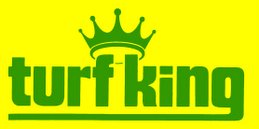5 THINGS TO DO FOR A HEALTHY LAWN
Fertilize Regularly as lawns require nourishment to survive. Use a fertilizer that slowly feeds the lawn with small amounts of nutrients over a long period of time. Too much fertilizer at one time can damage the lawn and lead to an increase in insects and disease. Organic fertilizers have an added bonus of enriching the soil and encouraging beneficial soil microbes.
Overseed your lawn in spring or the fall. Young seedlings are more vigorous and will thicken the lawn and fill in bare or thin spots. Use top quality seed and use shady grass seed for shaded areas. Water newly seeded areas lightly once or twice each day for 10-14 days.
Mow regularly with a sharp blade and at a height of 3 inches. Mowing high means more “blade shade”. More shade means less sunlight will hit the soil. This results in cooler soil temperatures and less moisture will be lost. Grass roots like cooler temperatures, crabgrass does not. The reduced sunlight will inhibit weeds from germinating. As well, chinch bugs prefer to feed on warmer lawns.
Water deeply and infrequently. Lawns need 1 - 1 1/2 inches of water per week. Put out a container under your sprinkler to learn whether an hour of watering will give you 1” of water or only half an inch, since different sprinklers will give different outputs of water.
Water once a week to let the lawn dry out in between. Don’t water in the evening as this promotes diseases. Avoid watering in the heat of the day to minimize evaporation loss.
WEEDS AND INSECTS
Weeds are almost always a problem, especially dandelions which can parachute in. Keep a close watch on your lawn, especially from July through October when insects can damage lawns. Use one of the new “organic” products to help reduce weeds and damage to your lawn
Fertilize Regularly as lawns require nourishment to survive. Use a fertilizer that slowly feeds the lawn with small amounts of nutrients over a long period of time. Too much fertilizer at one time can damage the lawn and lead to an increase in insects and disease. Organic fertilizers have an added bonus of enriching the soil and encouraging beneficial soil microbes.
Overseed your lawn in spring or the fall. Young seedlings are more vigorous and will thicken the lawn and fill in bare or thin spots. Use top quality seed and use shady grass seed for shaded areas. Water newly seeded areas lightly once or twice each day for 10-14 days.
Mow regularly with a sharp blade and at a height of 3 inches. Mowing high means more “blade shade”. More shade means less sunlight will hit the soil. This results in cooler soil temperatures and less moisture will be lost. Grass roots like cooler temperatures, crabgrass does not. The reduced sunlight will inhibit weeds from germinating. As well, chinch bugs prefer to feed on warmer lawns.
Water deeply and infrequently. Lawns need 1 - 1 1/2 inches of water per week. Put out a container under your sprinkler to learn whether an hour of watering will give you 1” of water or only half an inch, since different sprinklers will give different outputs of water.
Water once a week to let the lawn dry out in between. Don’t water in the evening as this promotes diseases. Avoid watering in the heat of the day to minimize evaporation loss.
WEEDS AND INSECTS
Weeds are almost always a problem, especially dandelions which can parachute in. Keep a close watch on your lawn, especially from July through October when insects can damage lawns. Use one of the new “organic” products to help reduce weeds and damage to your lawn



No comments:
Post a Comment